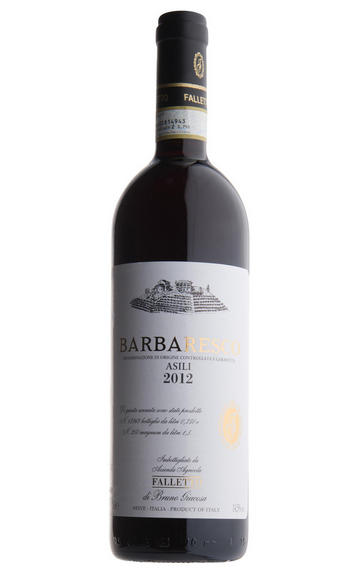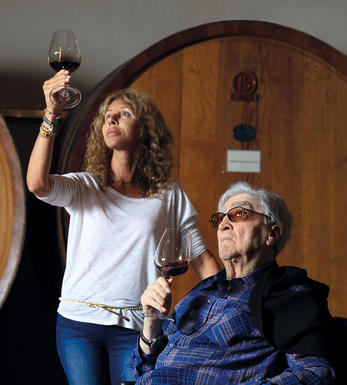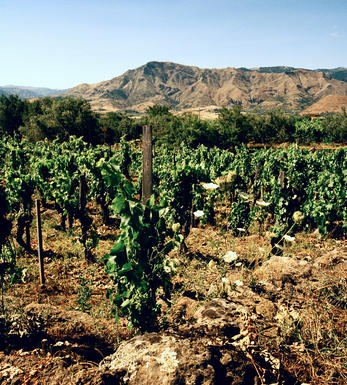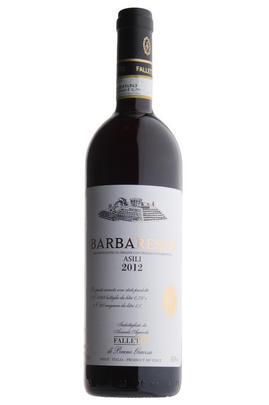
Critics reviews
David Berry Green
Made famous, justly so, by the skill of Bruno Giacosa during the 1970s and 1980s, now new techniques in the vineyards have ensured that the Nebbiolo grapes are picked slightly earlier than previously and at optimum ripeness. Maceration times have been reduced from around 50 days to nearer 30, as a consequence of having physiologically ripe fruit from the vineyards. The fashionable, new, French 225-litre barriques are not for Giacosa: all his wine is aged in large 5,000-litre botti, though these are now French rather than Slavonian. Bruno’s wines are marvellously perfumed on the nose, and meaty and full-bodied on the palate.
About this WINE

Bruno Giacosa
Giacosa are revered globally, with a reputation built on the elegance, purity and complexity of wines produced over the lifetime of Bruno Giacosa, who died in 2018. Over the course of 60 years, he came to be recognised as one of Piedmont's greatest winemakers. In 1945, at the age of 16, Bruno began working full-time in the family cellar. Rather than studying oenology, he instead absorbed the traditional knowledge and techniques passed down through his family. His approach was deeply considered, single-minded and perfectionist. Famously exacting and modest, he let his wines speak for themselves. Since 2006, the estate has been ably run by Bruno’s daughter, Bruna. Bruno’s standards have been upheld, with continued, unwavering commitment to producing wines of both the highest quality and of true vineyard expression. Since the 2012 vintage, all of their Barbaresco and Barolo have been made exclusively from estate-grown fruit.
There was a degree of circumspection here around the 2019 vintage. While it is certainly felt to be a good year – and a step up from 2018 – 2016 is seen as the paradigm, with 2019 not quite hitting its heights. Regardless of that, 2019 is still praised as having “everything”, and is considered a vintage that is balanced and complete. However, Giacosa have opted not to make their Vigna dei Rocche Riserva this year, and are delaying the release of the non-Riserva 2019 until later in 2023.

Barbaresco
The Piedmontese DOCG zone of Barbaresco is responsible for producing some of Italy’s finest wines. It occupies the same region and uses the same grape (Nebbiolo) as its bigger brother Barolo, but is a third of the size (only 640 hectares versus Barolo’s 1,700 hectares). It is also 50 years younger than Barolo, having produced wine labelled Barbaresco since 1890.
Barbaresco earned its DOCG after Barolo in 1980, largely thanks to the efforts of Angelo Gaja. The soils are lighter here than in Barolo – both in colour and weight – and more calcareous. The slopes are also less favourably situated and (relatively speaking) yield earlier-maturing yet extremely elegant wines that require less oak ageing (normally one year in oak plus six months in bottle). The appellation’s key districts are Barbaresco, Treiso, Neive and Alba.
Recommended producers: Cigliuti, Gaja, Marchesi di Gresy

Nebbiolo
Nebbiolo is the grape behind the Barolo and Barbaresco wines and is hardly ever seen outside the confines of Piedmont. It takes its name from "nebbia" which is Italian for fog, a frequent phenomenon in the region.
A notoriously pernickety grape, it requires sheltered south-facing sites and performs best on the well-drained calcareous marls to the north and south of Alba in the DOCG zones of Barbaresco and Barolo.
Langhe Nebbiolo is effectively the ‘second wine’ of Piedmont’s great Barolo & Barbarescos. This DOC is the only way Langhe producers can declassify their Barolo or Barbaresco fruit or wines to make an early-drinking style. Unlike Nebbiolo d’Alba, Langhe Nebbiolo can be cut with 15% other red indigenous varieties, such as Barbera or Dolcetto.
Nebbiolo flowers early and ripens late, so a long hang time, producing high levels of sugar, acidity and tannins; the challenge being to harvest the fruit with these three elements ripe and in balance. The best Barolos and Barbarescos are perfumed with aromas of tar, rose, mint, chocolate, liquorice and truffles. They age brilliantly and the very best need ten years to show at their best.



Buying options
Add to wishlist
Description
The Asili vineyard, close to the village of Barbaresco itself, is rightly regarded as one of the ‘Grand Cru’ sites of Barbaresco, thanks to its high elevation, steep slope, and mix of stony limestone and sand. In the right hands, as here, it gives wines of great perfume, detail and immaculate balance. 2012 was both a cool and damp and then an ultimately hot year, giving wines that are darker and crunchier, yet also and approachable even when young. Bottled in August 2014, Bruno Giacosa’s version displays an intense perfume of kirsch, super strawberry compote fruit. The palate’s refined and fresh, with plenty of energy; the tannins are talc-like. Even the red fruit has a stony minerality quality to it. This is the white Label (i.e. non Riserva).
David Berry Green
Made famous, justly so, by the skill of Bruno Giacosa during the 1970s and 1980s, now new techniques in the vineyards have ensured that the Nebbiolo grapes are picked slightly earlier than previously and at optimum ripeness. Maceration times have been reduced from around 50 days to nearer 30, as a consequence of having physiologically ripe fruit from the vineyards. The fashionable, new, French 225-litre barriques are not for Giacosa: all his wine is aged in large 5,000-litre botti, though these are now French rather than Slavonian. Bruno’s wines are marvellously perfumed on the nose, and meaty and full-bodied on the palate.
wine at a glance
Delivery and quality guarantee